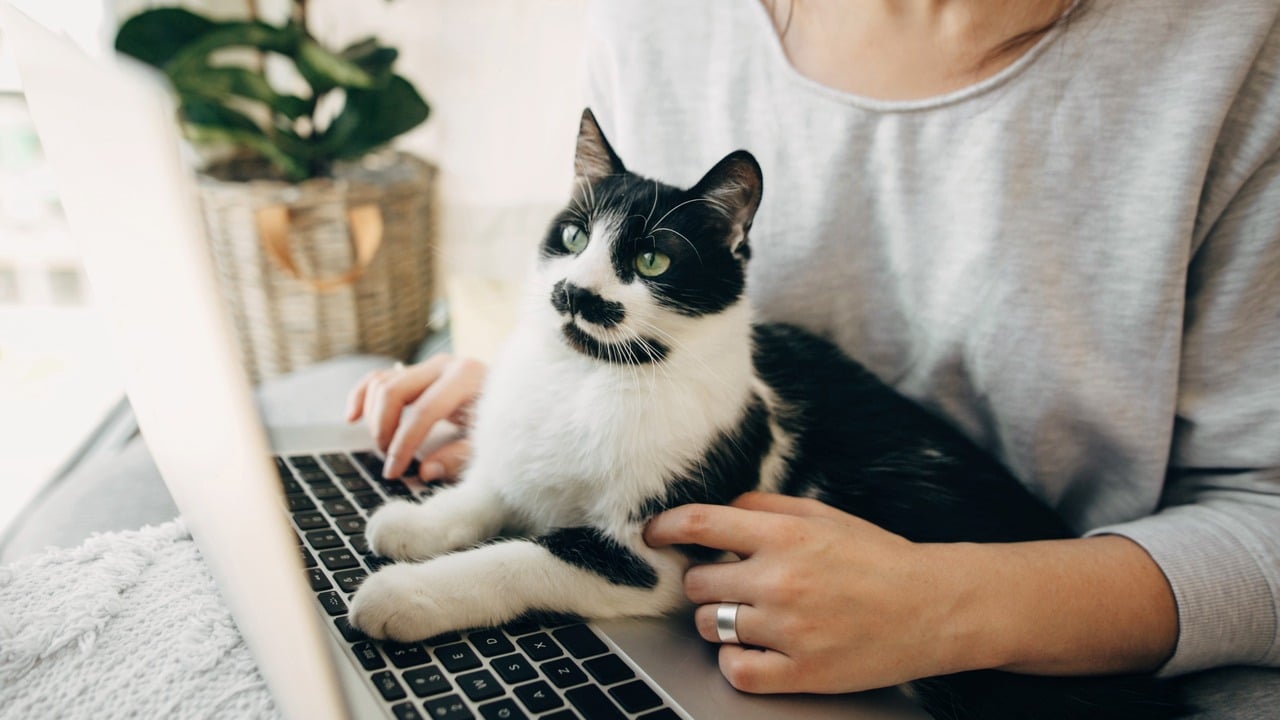Fur Parents Returning to the Workplace? Don’t Forget the Pet-Work Life Balance

A survey conducted by OnePoll for PetMeds reveals that 40% of pet owners would accept a lower salary in order to work from home and stay closer to their pets. The pandemic-inspired work-from-home trend provided remote workers with a unique opportunity to maintain a bond with their pets while still staying productive and accessible to employers. While a new return-to-work philosophy gains momentum, many work-from-home employees and their pets already experience separation anxiety.
“This research confirms what we already know: People love their pets and prioritize being with them,” says Matt Hulett, President and CEO of PetMeds. “What's eye-opening is how many pet parents feel their own sense of separation anxiety and loneliness when they're away from their pets – a concept that underscores the pivotal role our pets play in our lives.”
While some pet owners returning to the cubicle might consider installing a nanny cam or hiring a pet sitter to address their pet’s anxiety levels, some limited remedies are available for many former work-from-home employees. Reconnecting with their pets after work hours becomes an essential part of the day.
How Owners Reconnect With Their Pets
The OnePoll/PetMeds survey also reveals ways pet owners prefer to restore the bond with their pets after a work-related absence. 64% of respondents say they spent more time engaged in one-on-one playtime with their pets after returning home. Reporting “conversations” with their pets was also popular, while 61% offer special treats or rewards to their pets for good behavior.
Anxious pets often respond to physical touch from their owners. More than half of those surveyed report cuddling or grooming their pets. Going for walks or exercising at a dog park is also a common practice for owners and pets.
39% of pet owners report they watched TV shows or movies with their pets as a way to decompress after a long separation. Teaching pets new tricks or participating in obedience training was also mentioned. 18% of pet owners claim to routinely take photos or videos of their pets to post on social media. For the ultimate bonding experience, 16% say they take their pets on trips or vacations rather than board them or hire a pet sitter.
Common Separation Concerns for Working Owners
While work-related separations may be unavoidable for many pet owners forced to return to the office, there are common concerns about the change in routine.
52% of pet owners surveyed worry their pets would suffer from loneliness or boredom while the owner was away from home. Nearly half also feared their pets would experience severe separation anxiety during their absence.
Pet owners also expressed concerns about their pets having access to food and water throughout the workday. A third of the respondents mentioned health issues or accidents creating emergency situations. A pet could also find a way to escape its enclosure to become lost or disoriented outdoors.
Some pets suffering from separation anxiety become more aggressive or destructive. 25% of pet owners reported fears of damaged property or injuries triggered by stress or loneliness. A smaller percentage (14%) expressed concerns about other people mishandling their pets or getting injured.
Ways To Address Separation and Other Pet Anxieties
Separation anxiety can be a debilitating physical and mental issue for pets, and it falls on owners to address the issue before it reaches a danger point. 72% of pet owners use calming techniques such as petting or cuddling to combat the effects of separation. Spending more time in active play also helps reduce stress and anxiety, along with a generous supply of treats and snacks.
Providing a safe and comfortable space for pets is also a common remedy for 42% of pet owners surveyed. Unfamiliar sounds and street noises can trigger anxiety, so providing soft background music or white noise can help mask those unwanted sounds and encourage relaxation.
For more severe instances of separation anxiety, 16% of pet owners report using medications prescribed by veterinarians for behavioral issues. These mood stabilizers and anti-anxiety medications are effective ways to calm an anxious pet during extended absences. Another approach is using calming garments such as ThunderShirts or compression vests. Pets respond well to the sensation of being securely held during times of uncertainty or anxiety.
Can Working Pet Owners Ever Leave Their House Again?
Transitioning from remote work back to an office environment is already challenging for pet owners, but the change in routine doesn’t have to be too stress-inducing. Many pets do recover from the initial shock of separation and adjust their habits accordingly.
The time spent away from their owners can become time spent sleeping, eating, and exploring. Reuniting with their favorite people at the end of a workday becomes its own reward. As long as pet owners take concrete steps to minimize separation anxiety, returning to the workplace should not be a traumatizing experience for pets or owners.
This article was produced by Media Decision and syndicated by Wealth of Geeks.